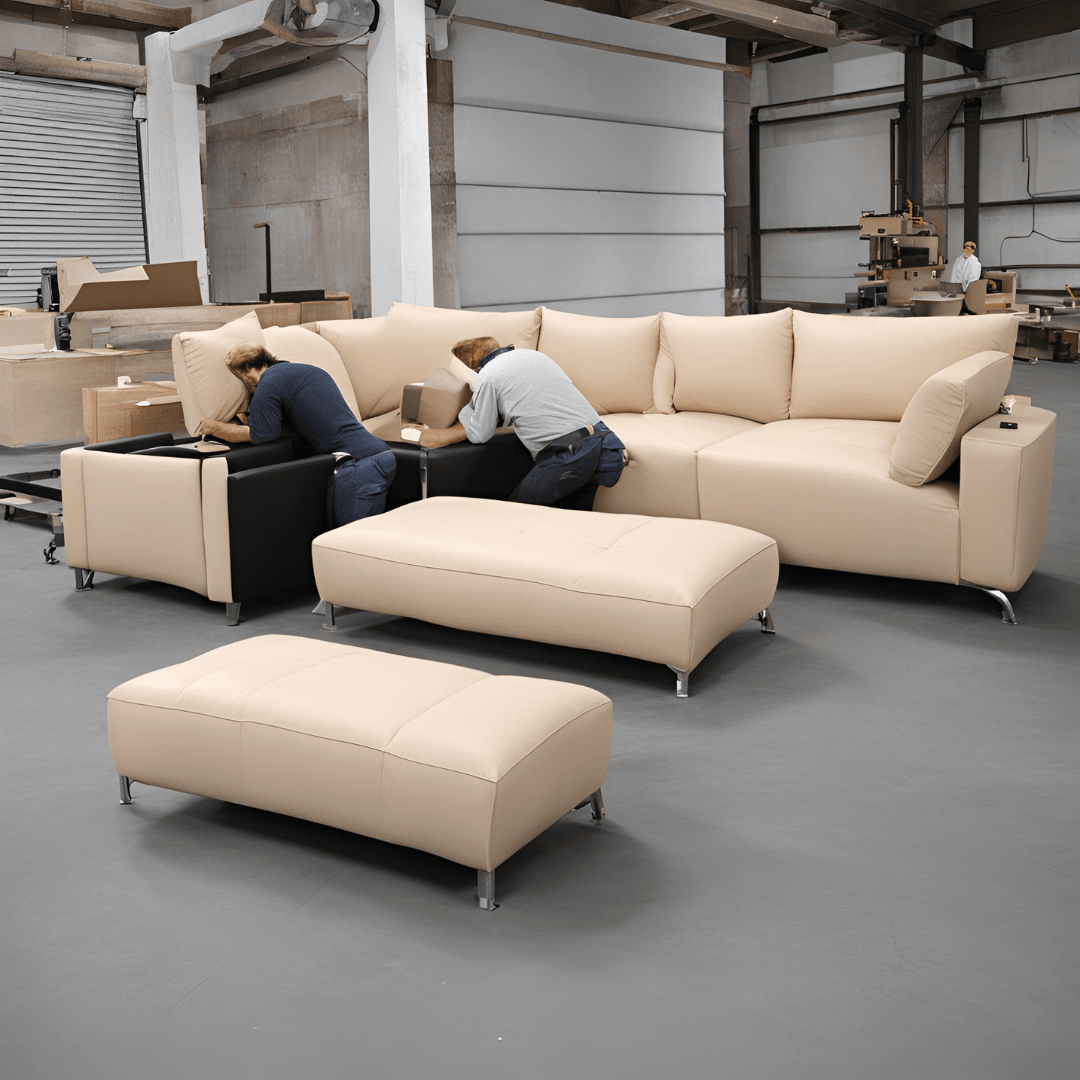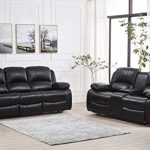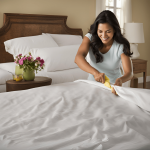
Do you know How Long Does a Couch Last? A couch typically lasts between 7 to 15 years. The lifespan depends on usage, quality, and maintenance.
A couch is a significant investment in home comfort and decor. Its durability can vary based on several factors. High-quality materials and craftsmanship usually result in a longer lifespan. Regular maintenance, such as cleaning and rotating cushions, also extends its usability.
Everyday wear and tear, especially in homes with kids or pets, can reduce its longevity. Choosing a couch that fits your lifestyle and maintaining it well ensures you get the most out of your purchase. Ultimately, understanding these factors helps in making an informed decision, ensuring your couch remains a cozy centerpiece for years.
Couch Lifespan Factors
When thinking about how long a couch lasts, several factors come into play. Understanding these factors can help you make informed decisions and extend the lifespan of your couch. Two key elements include the material used and the usage patterns. Knowing these can save you time and money.
Material Impact
The material of a couch significantly impacts its lifespan. Different materials wear out at different rates. Here are some common couch materials and their typical lifespans:
| Material | Typical Lifespan |
|---|---|
| Leather | 15-20 years |
| Fabric | 5-10 years |
| Microfiber | 7-10 years |
| Velvet | 10-15 years |
Leather couches generally last the longest. They can endure wear and tear but require regular maintenance. Fabric couches are popular but may not be as durable. They are prone to stains and fading. Microfiber couches offer a good balance of comfort and durability. They are resistant to stains and easy to clean. Velvet couches provide luxury and durability but need special care to maintain their appearance.
Choosing the right material can add years to your couch’s life. Always consider your lifestyle and maintenance habits before selecting a couch material.
Usage Patterns
How often you use your couch also affects its lifespan. Here are some usage patterns and their impacts:
- Daily Use: Couches used daily in high-traffic areas wear out faster. They may last 5-7 years.
- Occasional Use: Couches in guest rooms or less frequented areas can last 10-15 years.
- Family Use: Homes with children or pets may see more spills and stains. This can reduce the couch’s lifespan.
- Single Occupancy: A couch used by a single person will last longer. Less wear and tear means a longer life.
Frequent use leads to quicker wear and tear. High-traffic areas see more activity, which can shorten a couch’s lifespan. Homes with children or pets often face more spills and stains, reducing the couch’s life. On the other hand, a couch used occasionally or by a single person experiences less wear and tear, extending its lifespan.
Understanding how you use your couch can help you choose the right one and maintain it better. Always consider your household’s lifestyle when selecting a couch.
Types Of Couch Materials
Choosing the right couch material can significantly impact how long your couch will last. Different materials offer varying levels of durability, comfort, and maintenance. Understanding the types of couch materials will help you make an informed decision and ensure that your couch remains in good condition for years to come.
Fabric Choices
Fabric couches are popular due to their comfort and variety. The lifespan of a fabric couch depends on the quality of the fabric and its usage. Here are some common fabric choices:
- Cotton: Cotton is breathable and comfortable but may wear out quicker if not well-maintained. It is prone to stains and may require frequent cleaning.
- Linen: Linen is strong and durable but can wrinkle easily. It is also susceptible to stains, so it might need spot cleaning often.
- Polyester: Polyester is a synthetic fabric known for its durability and resistance to stains. It is easy to clean and maintain.
- Microfiber: Microfiber is soft and plush. It is resistant to stains and easy to clean, making it a great choice for households with kids and pets.
- Velvet: Velvet offers a luxurious feel but can be high-maintenance. It can wear out quickly with heavy use and requires gentle cleaning.
The table below compares the durability and maintenance of these fabric choices:
| Fabric | Durability | Maintenance |
|---|---|---|
| Cotton | Moderate | High |
| Linen | High | High |
| Polyester | High | Low |
| Microfiber | High | Low |
| Velvet | Moderate | High |
Leather Durability
Leather couches are known for their elegance and durability. They can last for decades with proper care. Here are the common types of leather used in couches:
- Full-Grain Leather: This is the highest quality leather. It is highly durable and develops a beautiful patina over time. It is resistant to wear and tear.
- Top-Grain Leather: Slightly less durable than full-grain, but still very strong. It is more affordable and offers a smooth finish.
- Split Leather: Made from the lower layers of the hide. It is less durable and more prone to damage. It is often used in less expensive furniture.
- Bonded Leather: Made from leather scraps bonded together. It is the least durable and can peel and crack over time.
The table below highlights the durability and cost of these leather types:
| Leather Type | Durability | Cost |
|---|---|---|
| Full-Grain | Very High | High |
| Top-Grain | High | Moderate |
| Split Leather | Moderate | Low |
| Bonded Leather | Low | Very Low |
Leather requires regular maintenance to keep it looking good. Applying a leather conditioner every six months will help prevent cracks and extend its lifespan. Avoid placing leather couches in direct sunlight to prevent fading and drying out.
Construction Quality
Buying a couch is a big decision. You want it to last a long time. Construction quality is a key factor in how long your couch will last. A well-made couch can last for many years. Let’s dive into the construction quality aspects that matter the most.
Frame Strength
The frame is the backbone of your couch. A strong frame means a sturdy couch. Here are key points to consider:
- Material: Hardwood frames are the best. Oak, maple, and ash are good choices. Avoid softwood frames like pine. They can break easily.
- Joinery: Look for joints that are glued and screwed. Corner blocks add extra strength. Staples alone are not enough.
- Testing: Sit on the couch. Wiggle it. A good frame won’t creak or wobble.
Here’s a simple table to compare different frame materials:
| Frame Material | Durability | Cost |
|---|---|---|
| Hardwood | High | Expensive |
| Softwood | Low | Cheap |
| Metal | Medium | Moderate |
Choosing the right frame material can extend the life of your couch. Invest in a hardwood frame for durability.
Cushion Support
Cushions provide comfort. They also affect how long your couch will last. Key points to consider for cushion support:
- Foam Density: High-density foam lasts longer. Look for a density of at least 2.0 pounds per cubic foot.
- Spring Systems: Sinuous springs or eight-way hand-tied springs are good choices. They offer better support and longevity.
- Padding: Look for cushions with extra padding. They keep their shape longer.
Here’s a simple table to compare different cushion materials:
| Cushion Material | Comfort Level | Durability |
|---|---|---|
| High-Density Foam | High | High |
| Low-Density Foam | Medium | Low |
| Feather-Down | Very High | Medium |
High-density foam cushions are the best choice. They offer excellent comfort and durability. Choose cushions wisely for a long-lasting couch.
Maintenance Tips
A couch is a big investment, and you want it to last as long as possible. Proper maintenance can extend the life of your couch. Here are some essential maintenance tips to keep your couch looking new and lasting longer.
Regular Cleaning
Regular cleaning can add years to the life of your couch. Dust and dirt can wear out the fabric over time. Here are some simple cleaning steps:
- Vacuum Weekly: Use a vacuum with an upholstery attachment to remove dust and dirt.
- Spot Clean Stains: Use a mild detergent and a soft cloth to clean any spills right away.
- Wash Removable Covers: If your couch has removable covers, wash them according to the manufacturer’s instructions.
For a more thorough cleaning, consider the following:
| Cleaning Method | Frequency |
|---|---|
| Professional Cleaning | Every 12-18 months |
| Deep Cleaning | Every 6 months |
Regular cleaning keeps your couch looking fresh and can prevent damage.
Protective Treatments
Applying protective treatments can safeguard your couch from stains and wear. Here are some options:
- Fabric Protection Spray: This spray can repel liquids and prevent stains. Apply it every 6 months.
- Slipcovers: These covers can protect your couch from spills and dirt. They are easy to remove and wash.
- Armrest Covers: These covers protect the arms of your couch, which often wear out first.
Consider these additional treatments for extra protection:
| Treatment | Benefits |
|---|---|
| Leather Conditioner | Prevents cracking and keeps leather soft |
| UV Protection | Prevents fading from sunlight |
Protective treatments can keep your couch looking new and extend its lifespan.
Signs Of Wear
How long a couch lasts depends on various factors, including usage, material, and maintenance. Over time, even the most durable couches show signs of wear. Recognizing these signs can help you determine when it’s time to replace or repair your couch.
Sagging Cushions
Sagging cushions are a common sign of wear on a couch. This happens when the foam inside the cushions loses its firmness. You might notice that the seats feel less comfortable or that you sink in more when you sit down.
- Loss of Comfort: Initially, the cushions might feel softer, but over time, they offer less support.
- Visible Indentations: If you see permanent indentations where people often sit, it’s a sign the cushions are sagging.
- Uneven Seating: Some parts of the couch might feel lower than others, making it uncomfortable to sit on.
One way to check if your cushions are sagging is to remove the cushions and press down on the springs. If the springs feel weak or don’t bounce back, it might be time to consider replacing them.
Let’s take a look at some common causes and solutions for sagging cushions:
| Cause | Solution |
|---|---|
| Worn-out foam | Replace the foam with high-density options. |
| Weak springs | Repair or replace the springs. |
| Poor-quality cushions | Invest in better-quality cushions. |
Fading Fabric
Fading fabric is another noticeable sign of wear on a couch. The fabric loses its original color due to exposure to sunlight, regular use, and washing.
- Discoloration: You might see that the fabric looks lighter or has different shades in certain areas.
- Thin Spots: Over time, the fabric can become thin and even develop holes.
- Rough Texture: The fabric might start to feel rough or scratchy instead of soft.
To prevent fabric from fading, consider the following tips:
- Limit Sun Exposure: Keep your couch away from direct sunlight.
- Use Slipcovers: Protective covers can help keep the original fabric from fading.
- Regular Cleaning: Clean the fabric according to the manufacturer’s instructions to maintain its color.
Fading fabric affects the look of your couch and can make it appear older than it is. If the fabric is badly faded, you might need to reupholster the couch or use slipcovers to give it a fresh look.
When To Replace
A couch is a central piece of furniture in any living room. It serves as a place for relaxation, gatherings, and even naps. But like all things, couches don’t last forever. Knowing when to replace your couch can save you from discomfort and potential injuries.
Comfort Issues
One of the first signs that your couch needs replacing is a decline in comfort. Comfort is crucial for a couch. If you notice any of the following issues, it might be time to start shopping for a new one:
- Flattened Cushions: Over time, the cushions may lose their firmness. When this happens, your couch becomes less comfortable.
- Lumpy Cushions: Cushions that feel lumpy can cause discomfort and back pain.
- Unpleasant Odors: If your couch has a persistent bad smell, it can affect your home’s ambiance.
- Stains and Spills: Some stains may become permanent, making your couch look unsightly.
Comfort issues can make sitting on the couch a less enjoyable experience. Replacing an uncomfortable couch can improve your home’s comfort and aesthetics.
Structural Problems
Structural problems are another clear sign that it’s time to replace your couch. A sturdy couch frame is essential for safety and durability. Look out for the following issues:
- Wobbly Frame: If the couch frame wobbles, it poses a risk of collapse.
- Broken Springs: Springs that poke through the fabric are hazardous and uncomfortable.
- Loose Joints: Joints that creak or feel loose indicate that the couch is losing its structural integrity.
- Cracked Wood: Visible cracks in the wooden frame can lead to the couch breaking under pressure.
Structural problems not only reduce comfort but can also be dangerous. Replacing a couch with structural issues ensures the safety and comfort of your family and guests.
Eco-friendly Options
When thinking about how long a couch lasts, it’s crucial to consider eco-friendly options. Choosing sustainable materials and recycling old couches can significantly extend the life of your furniture. This approach not only helps the environment but also ensures you get the most value from your purchase.
Sustainable Materials
Many couches are now made with sustainable materials, which are better for the planet. These materials are often renewable and biodegradable, making them a smart choice for eco-conscious buyers.
Here are some popular sustainable materials used in couches:
- Bamboo: Grows quickly and doesn’t require pesticides.
- Recycled Metal: Used for frames, it’s durable and recyclable.
- Organic Cotton: Free from harmful chemicals and pesticides.
- Hemp: Strong, durable, and grows with minimal water.
- Recycled Plastic: Converts waste into durable fabric.
Using these materials reduces the environmental impact of your couch. They also tend to be more durable, meaning your couch could last longer.
Here’s a quick table to compare the benefits of each material:
| Material | Benefits |
|---|---|
| Bamboo | Fast-growing, minimal pesticides |
| Recycled Metal | Durable, recyclable |
| Organic Cotton | Free from chemicals |
| Hemp | Strong, minimal water |
| Recycled Plastic | Converts waste |
Recycling Old Couches
Recycling old couches is another way to be eco-friendly. Instead of sending your couch to a landfill, consider these options:
- Donate: Many charities accept old couches in good condition.
- Sell: Platforms like Craigslist or Facebook Marketplace can help you sell your couch.
- Recycle: Some companies specialize in recycling old furniture.
- Upcycle: Transform your old couch into something new, like a bench or outdoor seating.
Recycling helps reduce waste and gives your old couch a new life. It’s a simple way to make a big impact on the environment.
Here’s a quick guide to recycling options:
| Method | Description |
|---|---|
| Donate | Give to charity for reuse |
| Sell | Use online platforms to sell |
| Recycle | Specialized companies recycle parts |
| Upcycle | Convert into new furniture |
By considering sustainable materials and recycling options, you can extend the life of your couch and help the planet.
Couch Care Myths
How long a couch lasts often depends on various factors, including its build quality, materials, and how well it’s maintained. Yet, many people fall for common couch care myths that can actually shorten its lifespan. Understanding these myths can help you better care for your couch and ensure it stays comfy and stylish for years to come.
Common Misconceptions
Many people believe several myths about couch care that can lead to improper maintenance. Here are some common misconceptions:
- Myth: Vacuuming your couch too often will wear it out.
- Truth: Regular vacuuming removes dust and debris, prolonging the fabric’s life.
- Myth: Using any cleaner is fine for your couch.
- Truth: Different materials require specific cleaners; using the wrong one can cause damage.
- Myth: Sunlight doesn’t affect couch fabrics.
- Truth: Sunlight can fade and weaken fabrics over time.
Believing these myths can lead to poor couch care practices. For instance, not vacuuming your couch can allow dust to build up, making the fabric wear out faster. Similarly, using the wrong cleaner can stain or degrade the material, and exposing your couch to direct sunlight can lead to discoloration.
Realistic Expectations
Setting realistic expectations about couch care can help you maintain its longevity. Here are some practical tips:
- Rotate cushions regularly: This ensures even wear and tear.
- Avoid direct sunlight: Place your couch away from windows or use curtains to block UV rays.
- Use appropriate cleaners: Always check the manufacturer’s guidelines for cleaning solutions.
- Regular vacuuming: Vacuum your couch weekly to remove dust and debris.
By following these simple steps, you can extend the life of your couch. For instance, rotating cushions can prevent uneven wear, while avoiding direct sunlight will help the fabric stay vibrant. Using the right cleaner ensures you don’t inadvertently damage your couch, and regular vacuuming keeps it looking fresh.
Remember, the goal is to debunk myths and adopt realistic care practices. This way, your couch can remain a cozy and stylish part of your home for many years.
Frequently Asked Questions
How Often Should You Replace A Sofa?
Replace a sofa every 7-15 years. Factors include usage, quality, and condition. Regular maintenance extends its lifespan.
How Long Is A Couches Lifespan?
A couch typically lasts 7-15 years, depending on its quality, usage, and maintenance. Regular care can extend its lifespan.
How Many Years Should You Get Out Of A Sofa?
A good sofa typically lasts 7-15 years. Longevity depends on usage, material quality, and maintenance. Regular care extends lifespan.
Can A Sofa Last 20 Years?
Yes, a sofa can last 20 years. Quality materials and proper maintenance extend its lifespan. Choose durable fabrics and sturdy frames. Regular cleaning and occasional reupholstering also help.
Conclusion
A couch can last many years with proper care and maintenance. Investing in quality materials ensures longevity. Regular cleaning and timely repairs extend its lifespan. Assessing your needs helps in making the right choice. Remember, a well-chosen couch enhances comfort and style in your living space for years to come.








